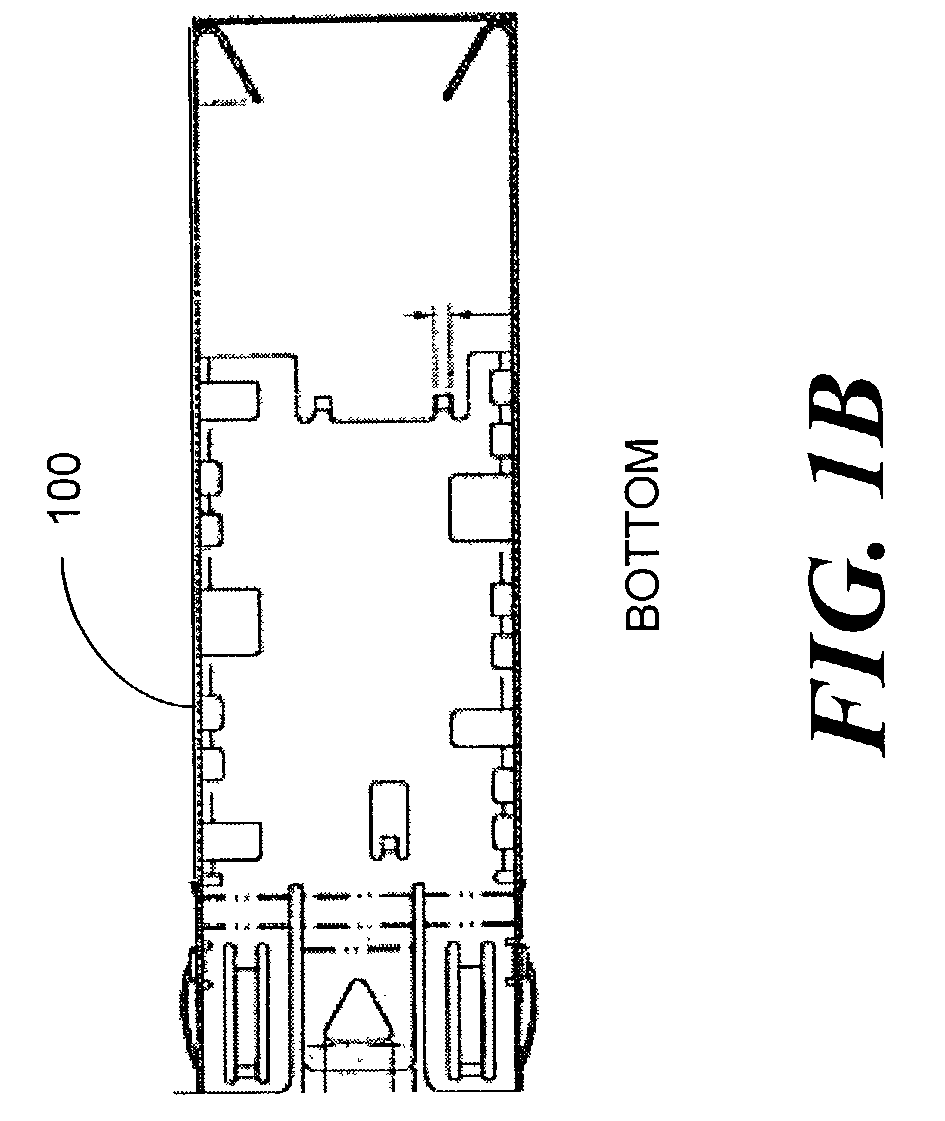EMI shield including a lossy medium
a lossy medium and emi shield technology, applied in the field of emi shield including a lossy medium, can solve the problems of reducing the efficiency of the ground conduction path through the enclosure, difficult to achieve effective shielding, and typically generating undesirable electromagnetic energy of electronic equipment, so as to enhance the performance of emi shield and reduce the effect of resonant “peaks
- Summary
- Abstract
- Description
- Claims
- Application Information
AI Technical Summary
Benefits of technology
Problems solved by technology
Method used
Image
Examples
Embodiment Construction
[0038]Lossy materials can be used to suppress EMI transmissions, for example, by converting the electromagnetic energy into another form of energy, such as thermal energy. The electromagnetic fields can induce electrical currents to flow within the lossy material having a finite electrical conductivity, resulting in ohmic losses. In one embodiment, the lossy material can be composed of ferrite-like material mixed in an elastomer, such as a resin binder. In other embodiments, the lossy material can be composed of a lossy filler material, such as carbon powder mixed in an open-celled reticulated foam. The lossy materials can be configured in sheet form or in a liquid form for coating a substrate. Some examples of lossy materials are electrically conductive material, carbon, iron, carbonyl iron powder, sendust, ferrites, iron silicide, magnetic alloys, magnetic flakes, steel wool, and combinations thereof. Other examples of lossy materials include carbon-impregnated rubber, ferrite in ...
PUM
 Login to View More
Login to View More Abstract
Description
Claims
Application Information
 Login to View More
Login to View More - R&D
- Intellectual Property
- Life Sciences
- Materials
- Tech Scout
- Unparalleled Data Quality
- Higher Quality Content
- 60% Fewer Hallucinations
Browse by: Latest US Patents, China's latest patents, Technical Efficacy Thesaurus, Application Domain, Technology Topic, Popular Technical Reports.
© 2025 PatSnap. All rights reserved.Legal|Privacy policy|Modern Slavery Act Transparency Statement|Sitemap|About US| Contact US: help@patsnap.com



